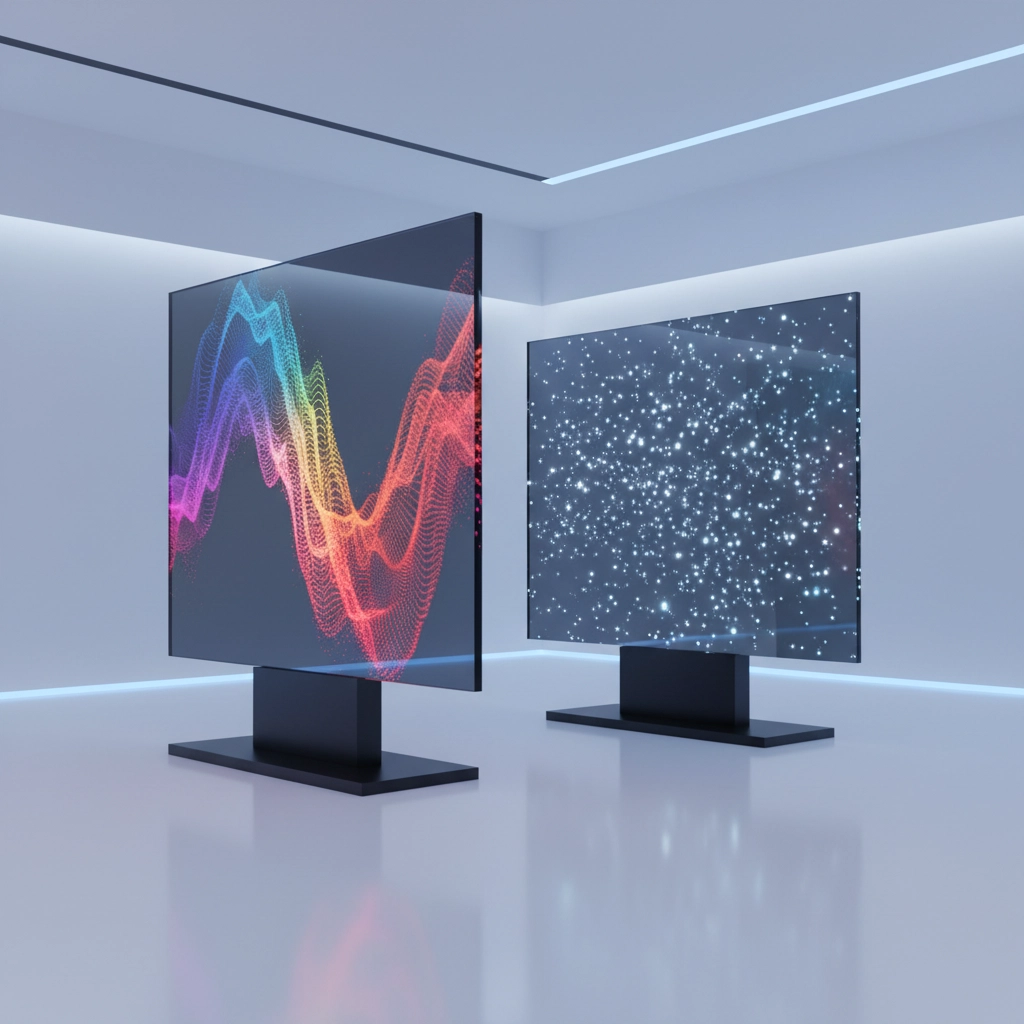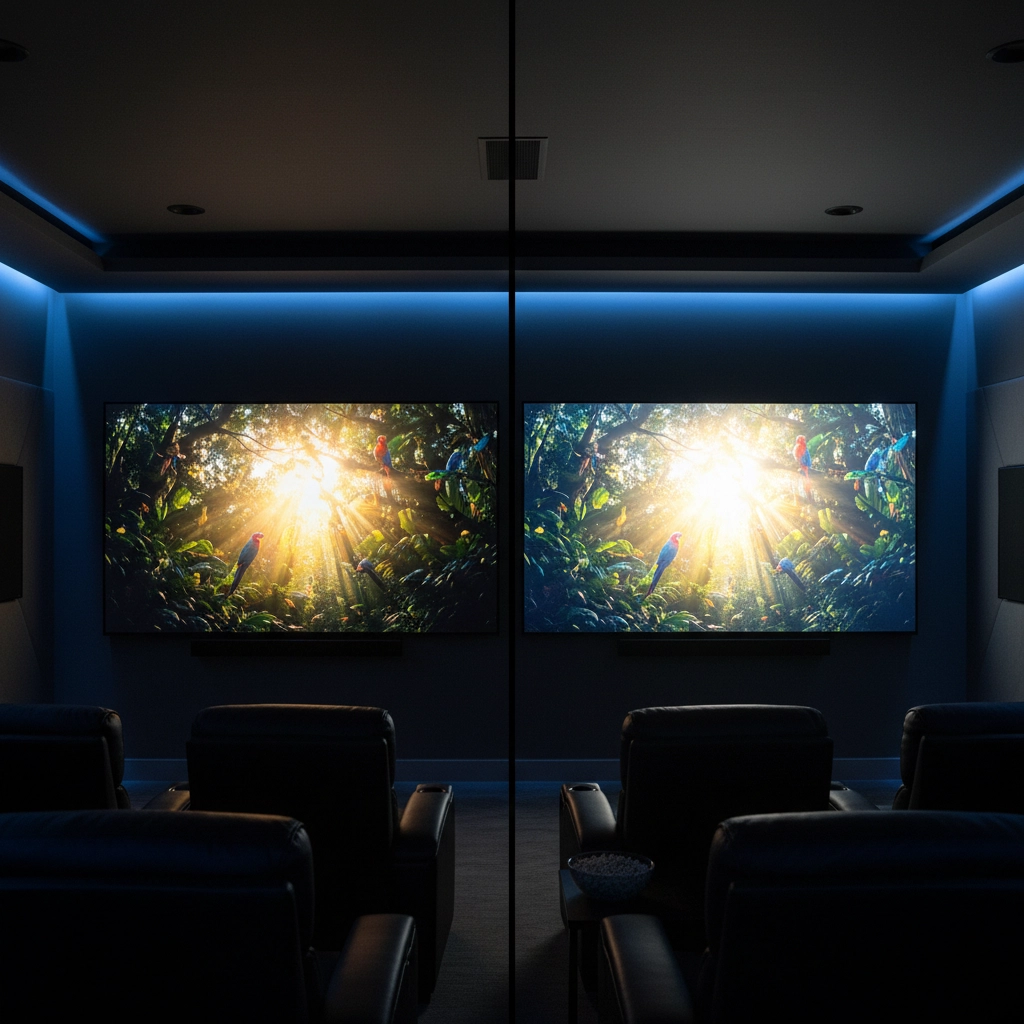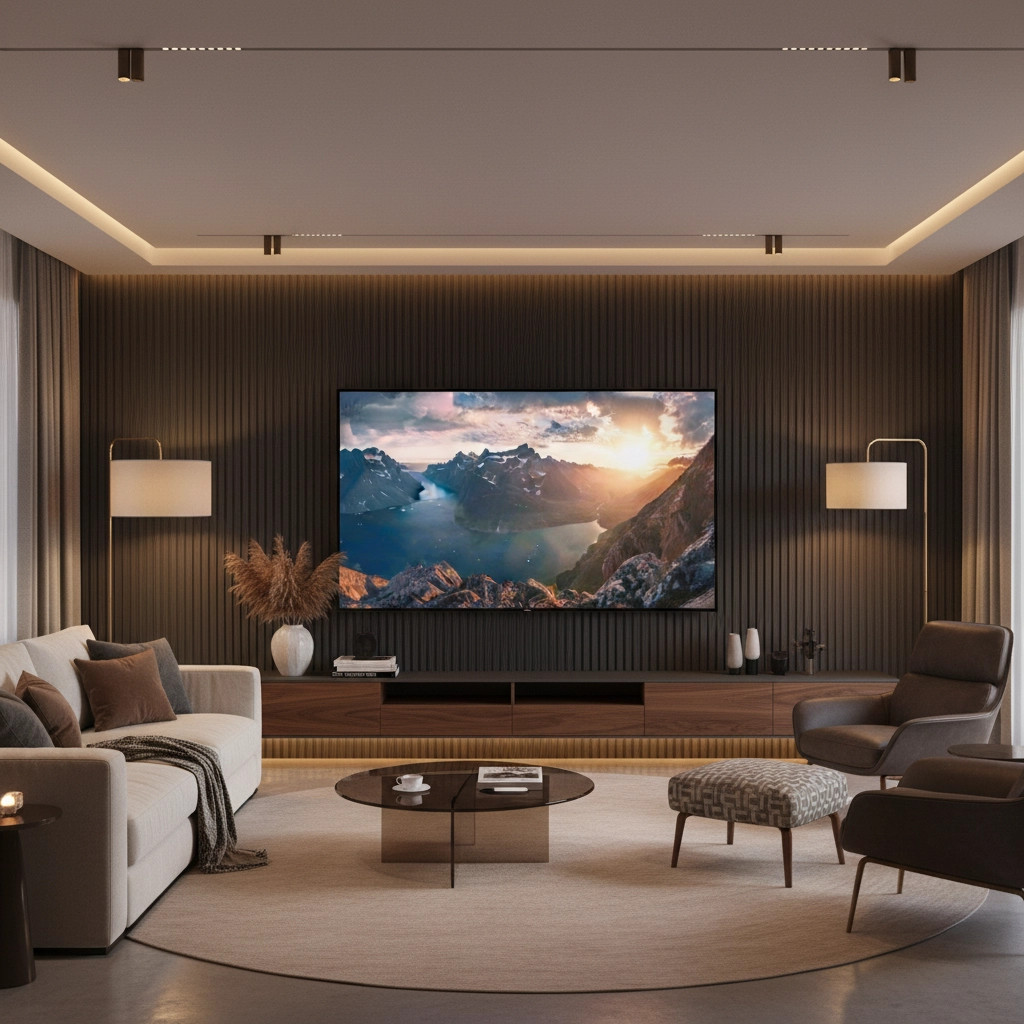Published: September 15, 2025
Welcome to our store! If you're shopping for a premium display in 2025, you've probably encountered two cutting-edge technologies: MicroLED and QD-OLED. These represent the pinnacle of display innovation, but which one delivers the best value for your specific needs?
This guide breaks down everything you need to know about both technologies, helping you make an informed decision for your next display purchase.
What Are MicroLED and QD-OLED Displays?
Understanding these technologies starts with knowing how they create images on your screen.

QD-OLED Technology
QD-OLED displays combine traditional OLED technology with quantum dot enhancement. These displays use individual organic diodes that light up independently, delivering excellent contrast and deep blacks. The key difference lies in the added quantum dot layer that sits over these diodes, boosting color richness and brightness beyond what standard OLED can achieve.
This quantum dot layer focuses specifically on color reproduction, making QD-OLED panels more color-accurate than traditional QLED displays while maintaining the contrast benefits of OLED technology.
MicroLED Technology
MicroLED takes a completely different approach. These displays feature millions of tiny individual colored LEDs that create the image and emit light directly. Unlike QD-OLED, MicroLED contains no organic compounds whatsoever – it's purely inorganic technology.
Each microscopic LED is self-illuminating, similar to OLED in principle but without the organic material limitations. This makes MicroLED displays as close to smartphone AMOLED technology as possible for large-screen applications.
Key Technology Differences
Here are the fundamental differences between these display technologies:
Light Source and Structure
- QD-OLED: Organic diodes + quantum dot enhancement layer
- MicroLED: Pure inorganic microscopic LEDs
Material Composition
- QD-OLED: Contains organic compounds that may degrade over time
- MicroLED: Completely inorganic, eliminating degradation concerns
Brightness Capabilities
- QD-OLED: Typically reaches around 1,000-1,300 nits
- MicroLED: Significantly higher brightness potential
Manufacturing Approach
- QD-OLED: Traditional panel manufacturing
- MicroLED: Modular construction allowing custom sizes
Performance Comparison

Brightness and HDR Performance
MicroLED displays excel significantly in brightness capabilities compared to QD-OLED panels. While QD-OLED has improved brightness over traditional OLED, MicroLED promises much higher peak brightness levels that enhance HDR content viewing.
For HDR content, both technologies deliver excellent performance, but MicroLED's superior brightness makes highlights more impactful and realistic.
Contrast and Black Levels
Both technologies offer exceptional contrast performance:
- QD-OLED: Maintains OLED's signature perfect blacks with improved brightness
- MicroLED: Delivers perfect contrast with incredibly sharp images due to individual pixel control
The contrast advantage goes to MicroLED for its combination of perfect blacks and superior brightness range.
Color Accuracy and Gamut
Color performance varies between the technologies:
- QD-OLED: Wider color gamuts than traditional OLED due to quantum dot enhancement
- MicroLED: Higher overall color gamuts with excellent brightness-related color performance
Both deliver professional-grade color accuracy, with MicroLED having a slight edge in overall color reproduction capabilities.
Durability and Longevity
This is where MicroLED clearly wins:
- QD-OLED: Improved over traditional OLED but still contains degradable organic compounds
- MicroLED: Superior longevity due to inorganic construction and individual pixel control
MicroLED eliminates burn-in concerns and color degradation that can affect OLED-based displays over extended periods.
Practical Shopping Considerations
Availability and Market Options
QD-OLED displays are much more widely available and accessible. Major manufacturers like Samsung have integrated these panels into their premium TV lineups, making the technology available through standard retail channels.
MicroLED displays remain limited to very large screen sizes with considerably higher price tags. Consumer availability is still quite restricted in 2025.
Pricing Reality
The price difference is substantial:
- QD-OLED: Premium pricing but within reach of high-end consumers
- MicroLED: Often reaching six-figure territory for consumer applications
Size and Installation Options
QD-OLED displays come in conventional TV and monitor sizes that work for typical home and office environments. Installation follows standard procedures similar to traditional premium displays.
MicroLED offers virtually unlimited size options due to its modular construction. You can create custom aspect ratios beyond standard 16:9, including ultra-wide 32:9 formats. However, large installations often require professional setup due to panel alignment requirements.

Which Technology Should You Choose?
Choose QD-OLED If You:
- Want premium display quality with reasonable availability
- Need a display for standard home or office use
- Prefer conventional installation and setup
- Want the best balance of performance and practicality
- Have a high-end budget but not unlimited resources
Choose MicroLED If You:
- Have substantial budget flexibility
- Need maximum brightness and perfect contrast
- Want long-term durability without degradation concerns
- Require custom sizes or unique aspect ratios
- Are building a luxury home theater or commercial installation
Future Considerations
The display landscape continues evolving rapidly. QD-OLED technology is becoming more affordable and widely available, making it increasingly accessible to premium consumers. Meanwhile, MicroLED manufacturing improvements may eventually reduce costs and increase availability.
For 2025, QD-OLED represents the sweet spot for most premium display purchases, offering exceptional performance with practical availability and pricing. MicroLED remains the ultimate choice for those with specific requirements and substantial budgets.
Both technologies deliver superior performance compared to traditional LCD and even standard OLED displays. Your choice depends on balancing performance requirements, budget constraints, size preferences, and availability considerations.
Ready to explore premium display options? Check out our TVs and projectors collection to discover the latest QD-OLED and other advanced display technologies available today.
Share this guide with anyone considering a premium display upgrade, and subscribe to our updates to stay informed about the latest display technology developments and exclusive offers on cutting-edge electronics.

